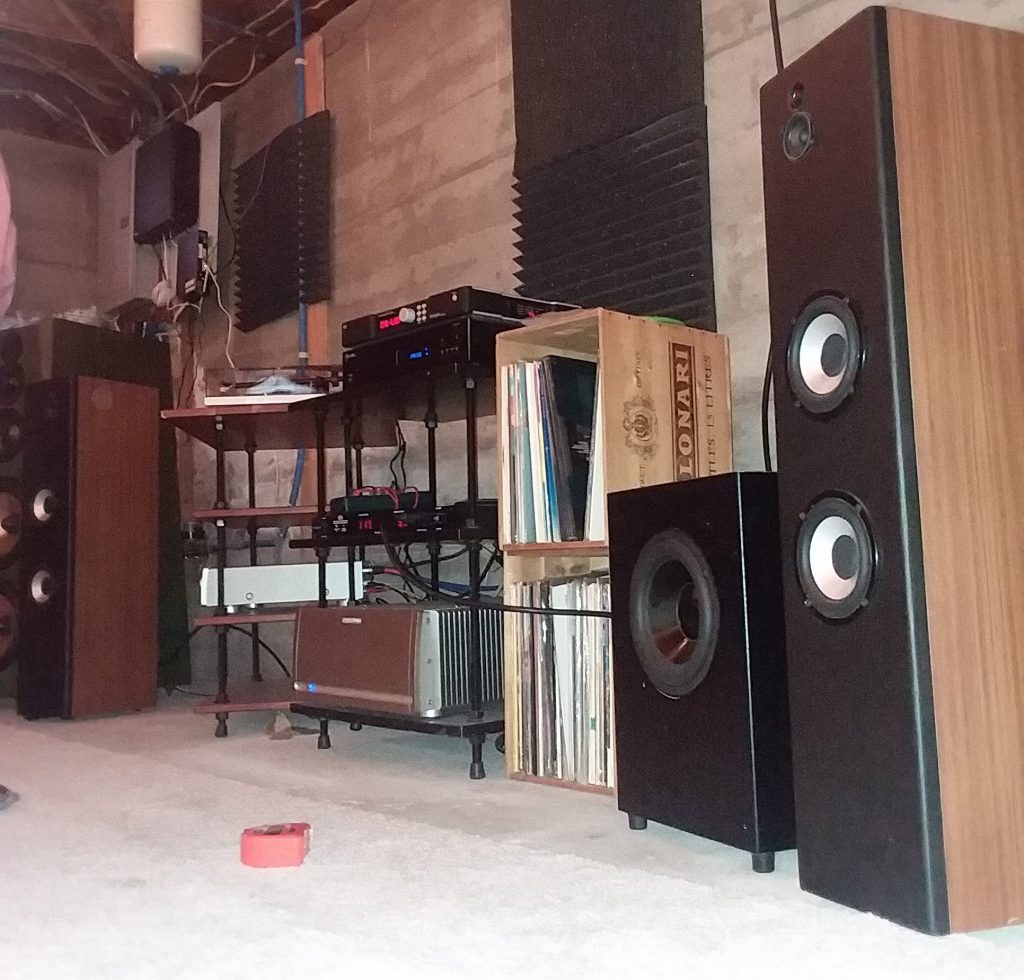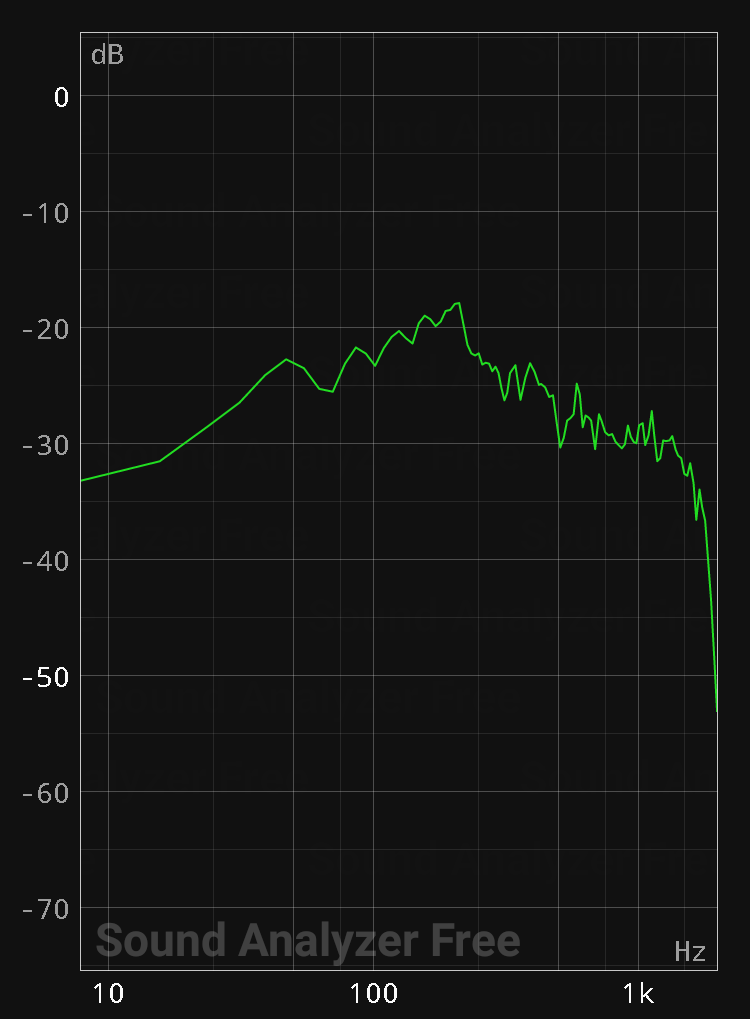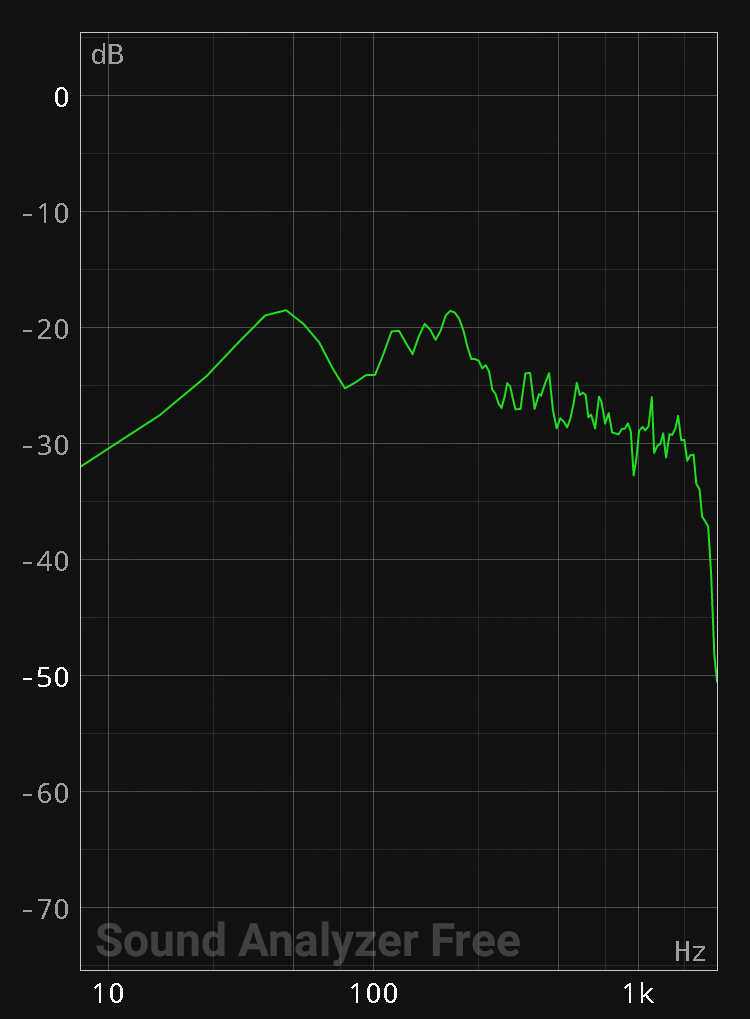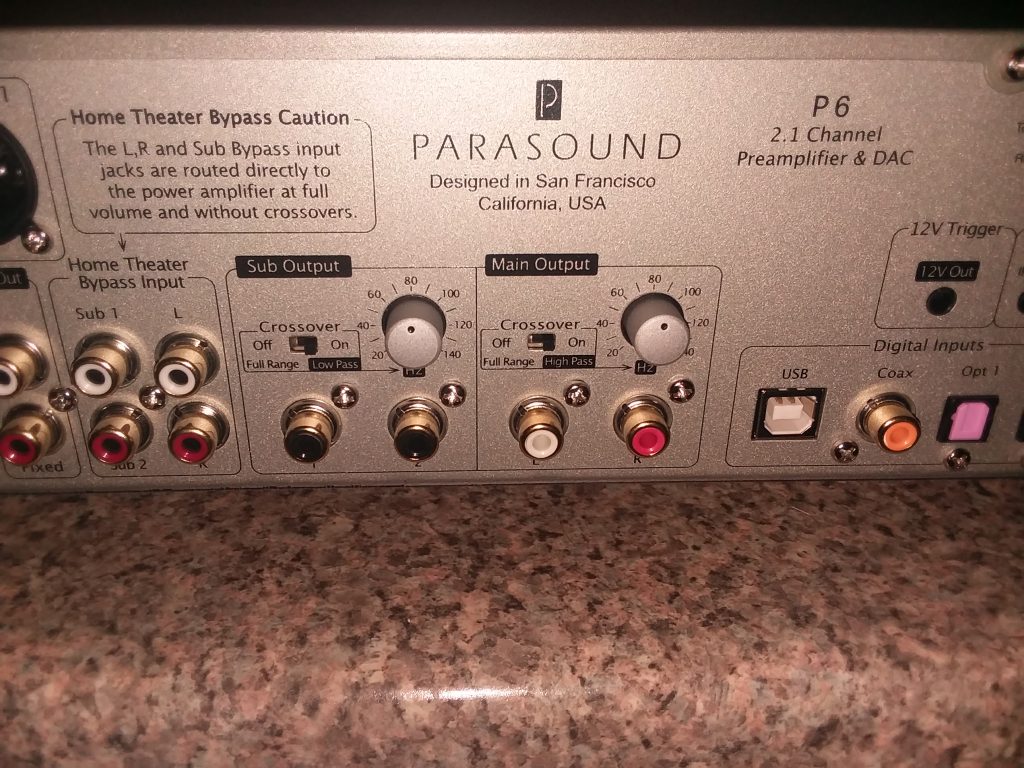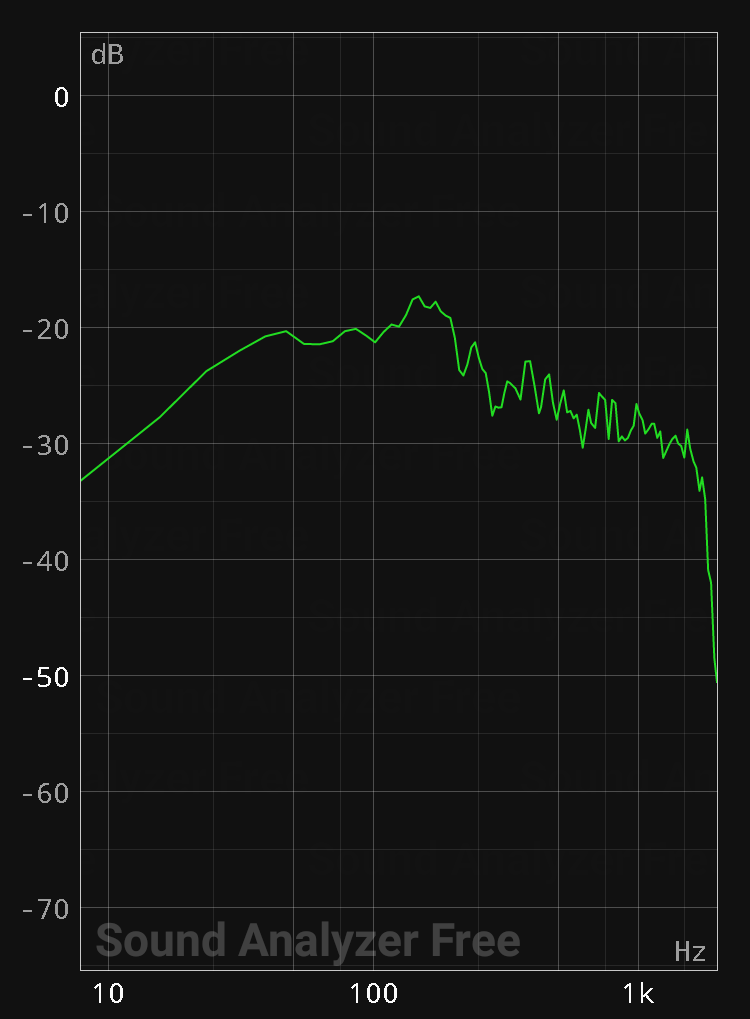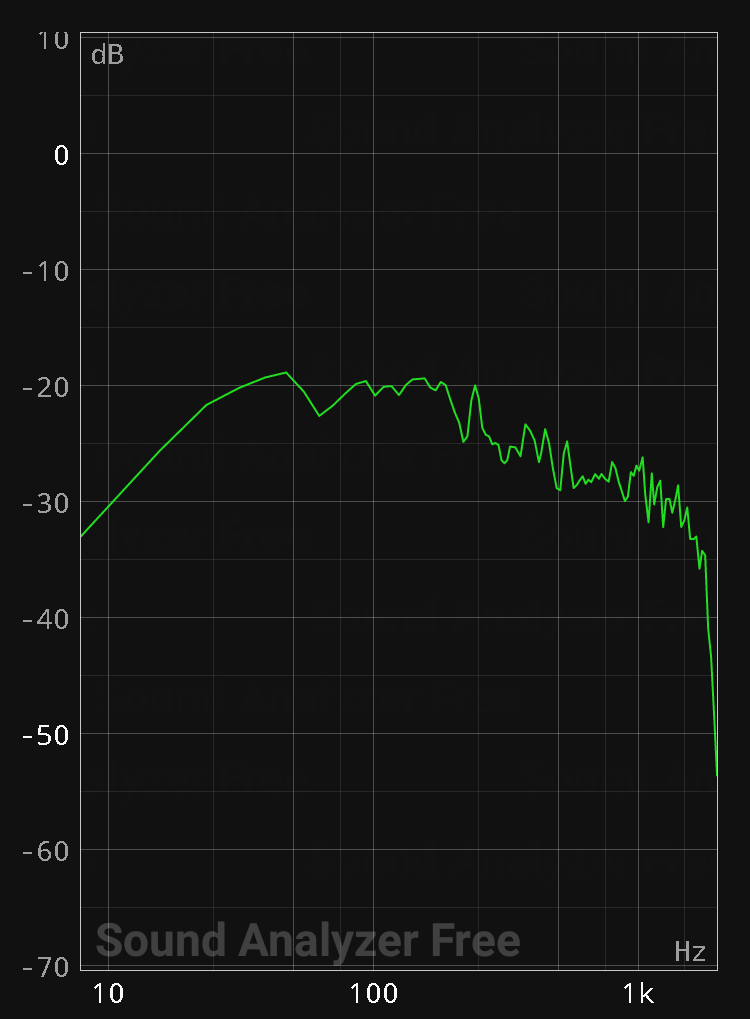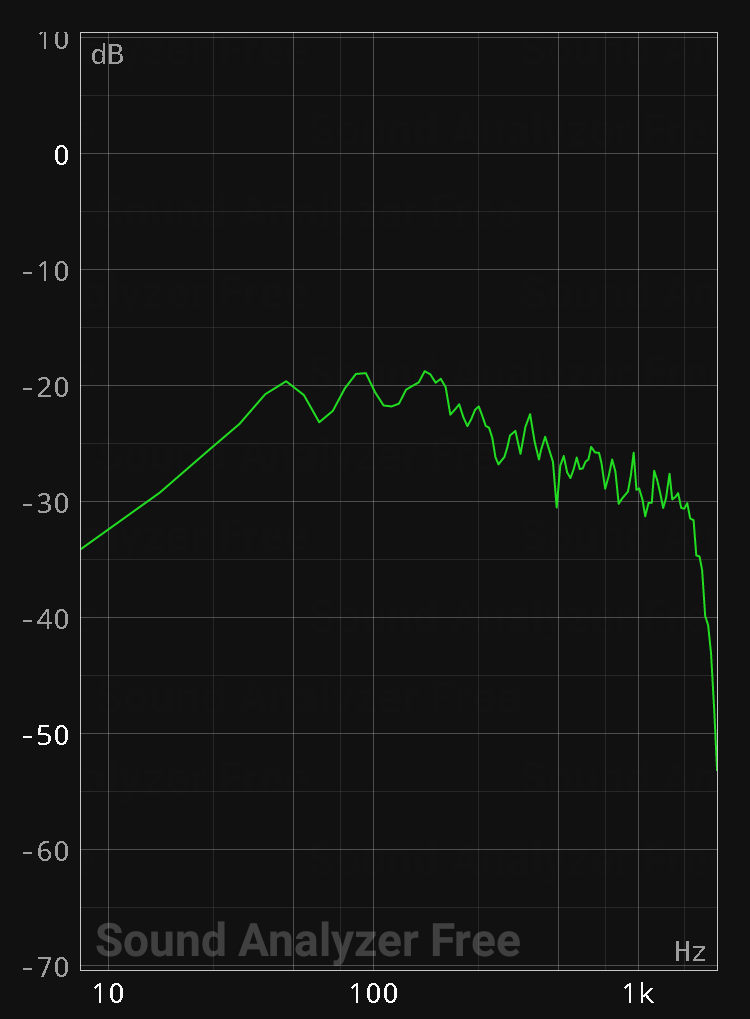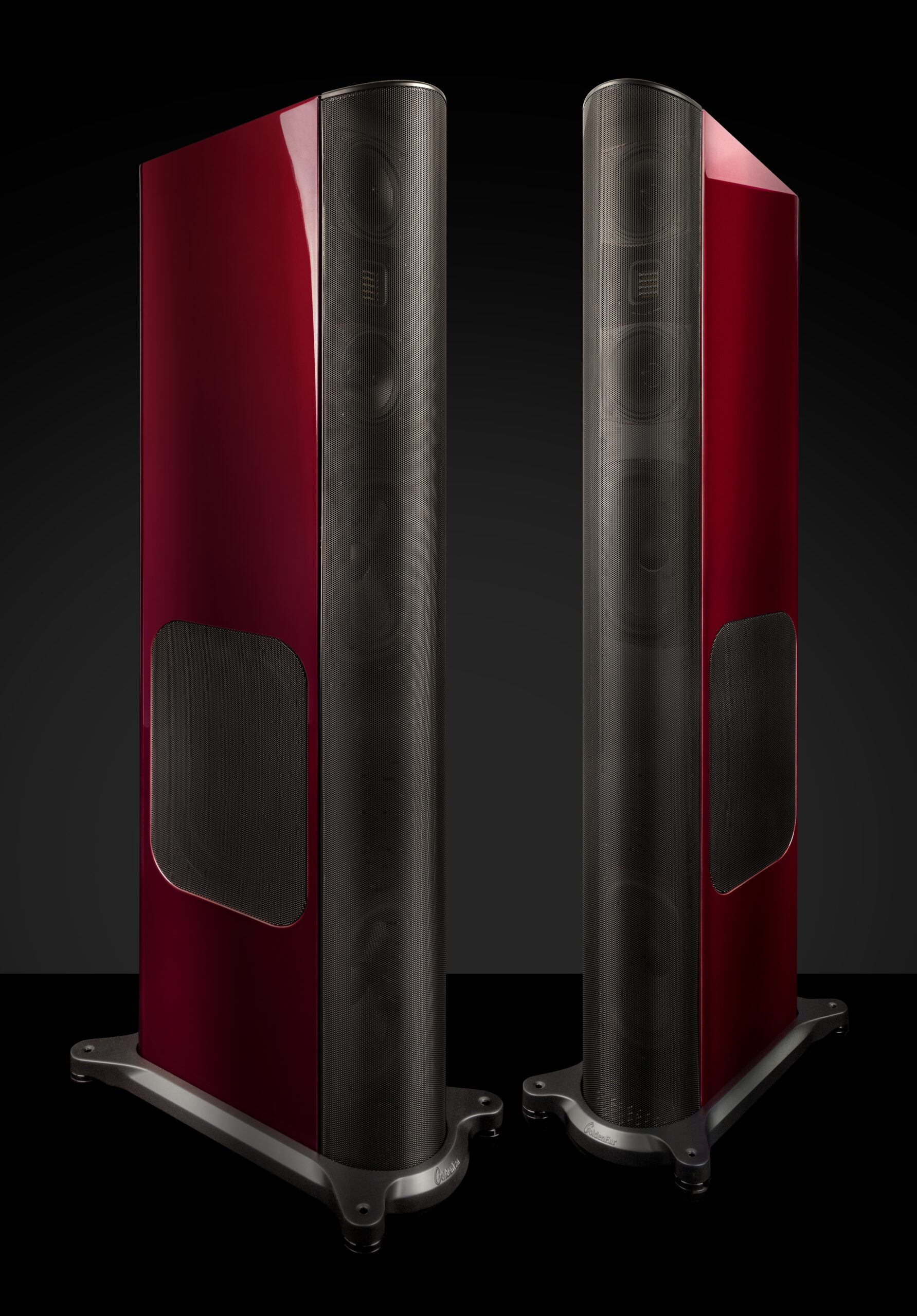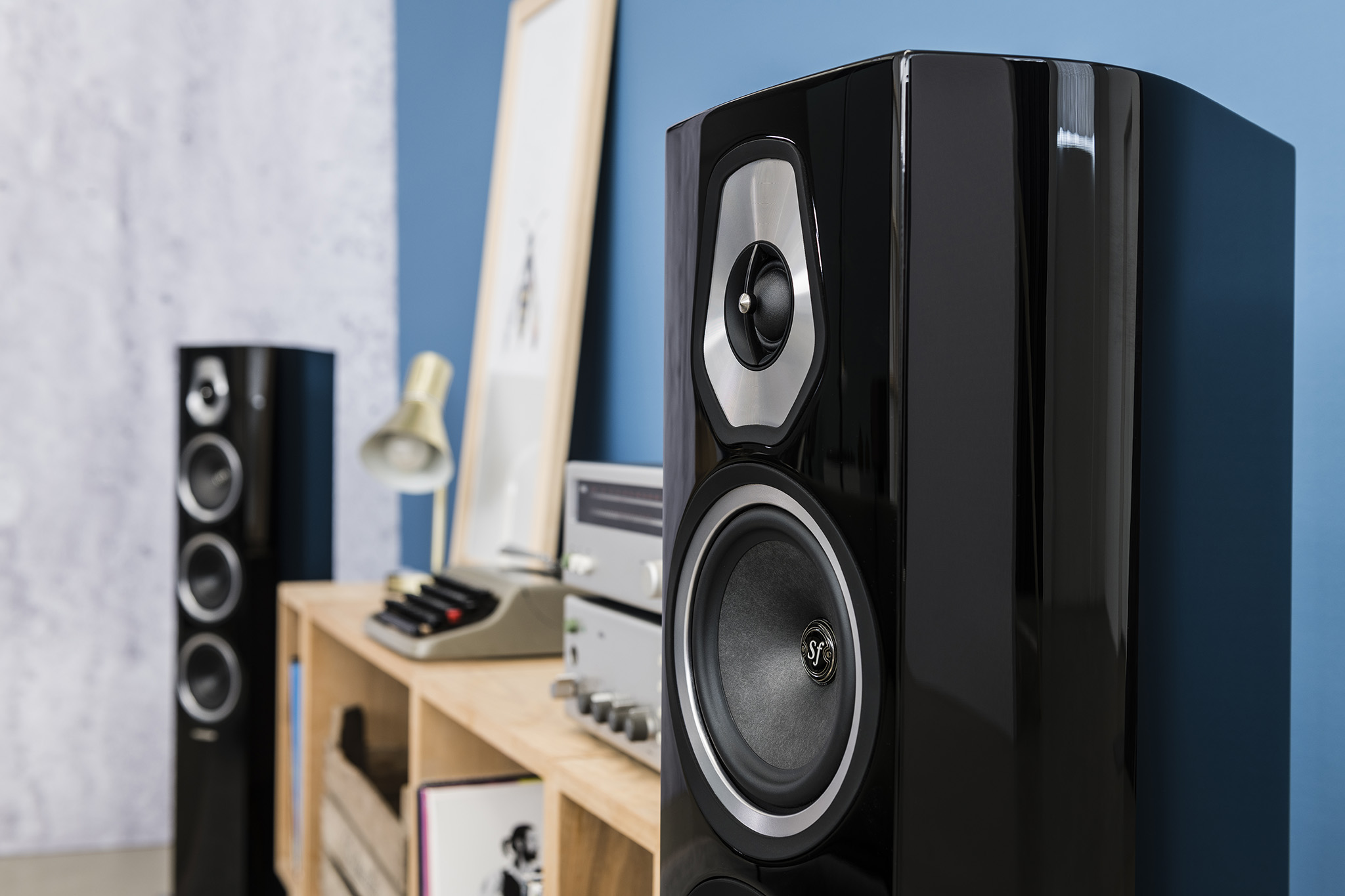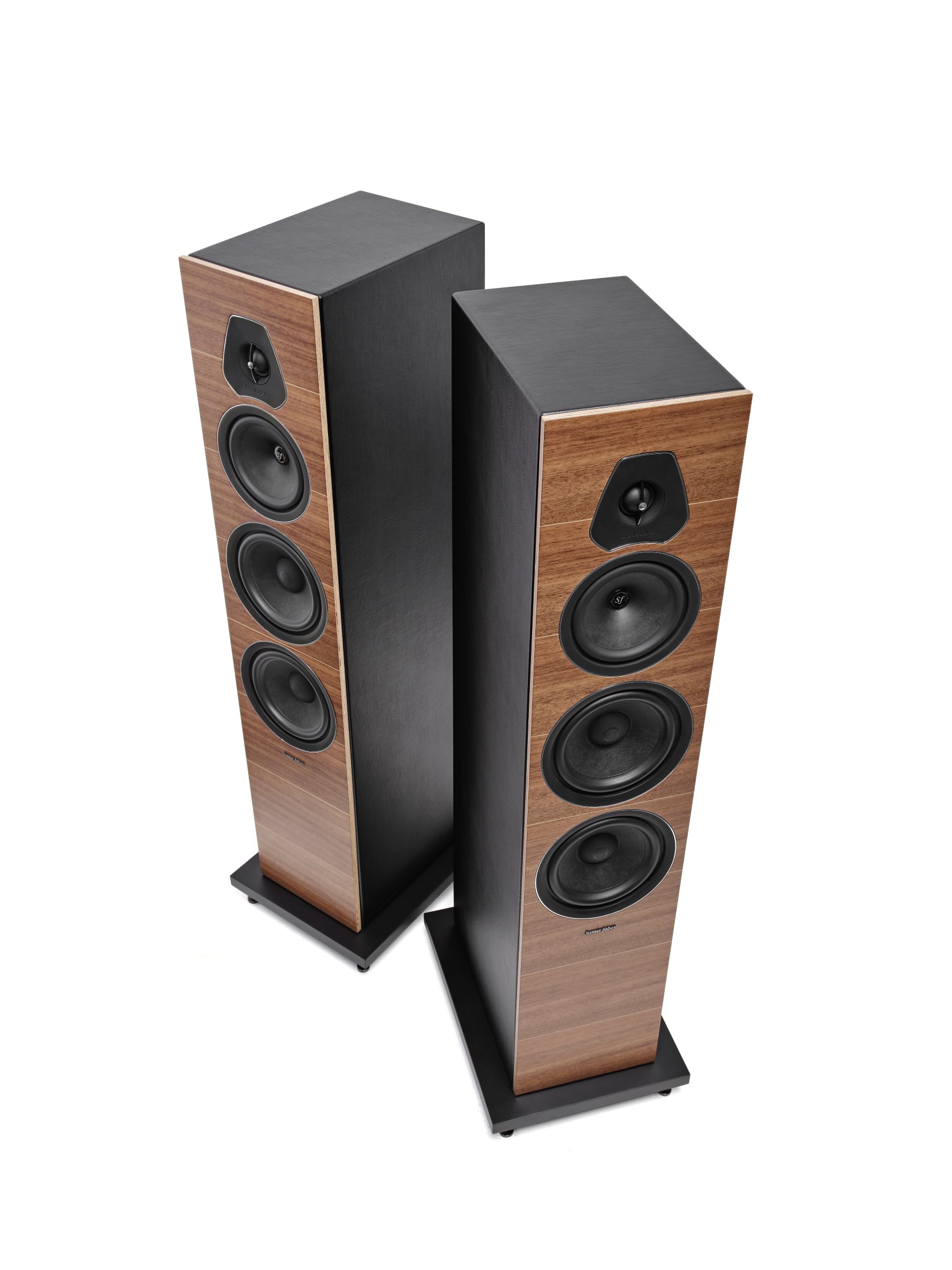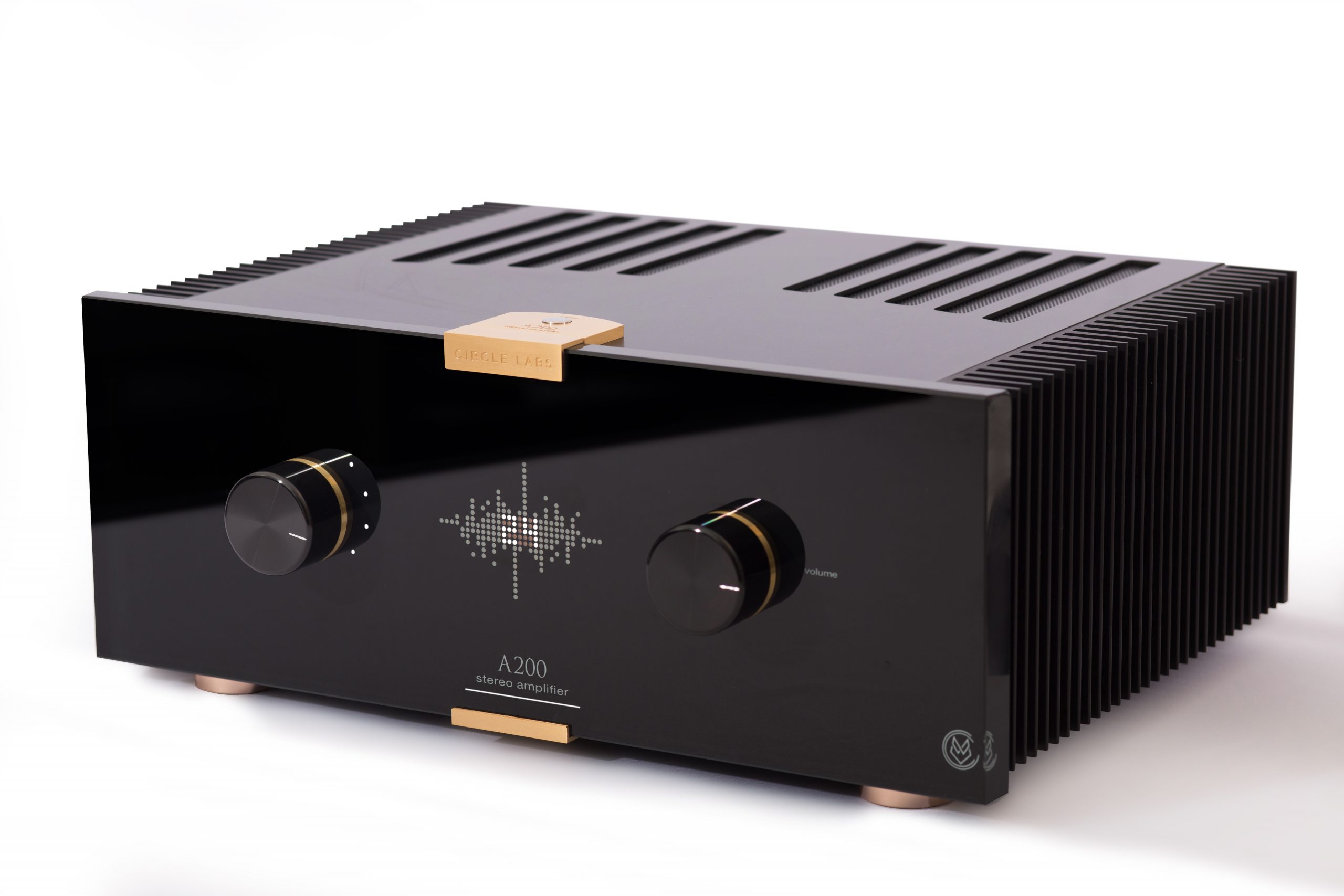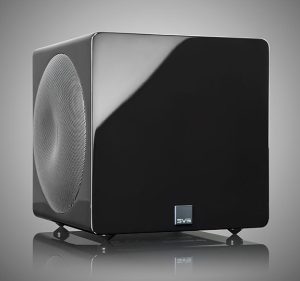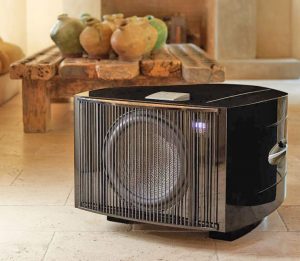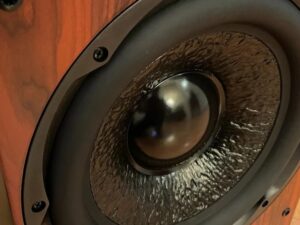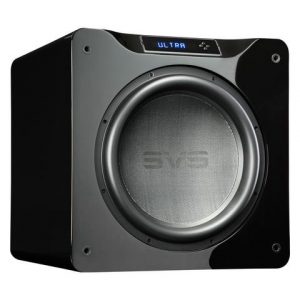Happy Little Accidents
Bob Ross (1942-1995) was the loving host of the 1980's TV show The Joy of Painting. He enjoyed the peace, serenity, and most importantly; the process of creating a beautiful painting on a blank canvas. Many of our listening spaces are blank canvasses. But, despite the usual claims that great low-frequency reproduction requires technical perfection in the form of several non-negotiable "must-have" parameters, in the real world, the process of setting up a subwoofer to achieve high-quality bass can be rather matter-of-fact and pragmatic.
Mr. Ross was famous for turning his painting mistakes into "happy little accidents," and they always resulted in an organic progression into something beautiful. Many listening spaces, including my own, are happy little accidents just waiting to be capitalized on. Relevant to this, an epiphany came to me while evaluating the Parasound P 6 preamp/DAC (Issue 102), that happens to have a wonderful active main loudspeaker/subwoofer crossover built in.
It does not have to be difficult to maximize both the crossover adjustment and output level, no matter the speakers or subwoofers are involved, in any system. What follows is the journey made simple; to share the joy of good sound reproduction, in hoping that it will help you turn your happy little accident into something beautiful.
The Truth About Bass
Loudspeaker/subwoofer/listening space interface is a very complex subject. This is due in large part to the fact that listening spaces are an acoustic component of the loudspeaker at very low frequencies. Further, when it comes to detecting changes in pressure at low frequencies, our ears are not very sensitive. If you do not believe me, simply look at the size of a tuba, concert bass drum, or double bass. The size of these instruments is large so that they are able to generate enough acoustic energy to be perceptible to the ear/brain system.
There is no such thing as perfect bass response for a given room unless the room was specifically designed along with the loudspeakers for it. Other complexities exist in the very tools we have for room correction: Digital Signal Processing (DSP), equalization, and automatic set-up systems can create as many problems as they solve. Multiple subwoofers can smear transient information, interact with each other (mainly between 20Hz and 40Hz), and add so much signal complexity that what is left is anything but the original signal. A single subwoofer (which I will be using and is common in music systems) excites a listening space unevenly, can be easily localized by the ear if not crossed over low enough, and may not always match well with the main loudspeakers being used.
The real, and often unrealistic answer for bass bliss is to have loudspeakers that are capable of first octave (20Hz-40Hz) bass at pressures significant enough to support both technically correct integration from low-bass, into the mid-bass frequency range, and perceptually correct timbre to the instruments being reproduced. This is the very reason why studios, for both music and movie mastering alike, utilize extremely large but impractical-for-the-home loudspeakers.
Yet if we leverage the lack of sensitivity our ears have at the lowest frequencies, it is possible to respectably approach the performance of large, full-range loudspeakers using a subwoofer and smaller loudspeakers. We accomplish this by assuring subwoofer is placed properly in the listening space, level-matched with the main loudspeakers, and crossed over to the main loudspeakers in as linear a fashion as possible at the desired seating position.
High Quality Bass and Associated Equipment
If the goal of this set-up is high-quality bass, I feel I need to define what "high-quality" bass sounds like in the context of a high-fidelity audio system. The sonic character of high-quality bass is one where the bass is in scope, scale, and perceived timing with the rest of the program material. In recordings that possess an abundance of bass it is there as required, and in recordings that do not have much bass (even though we sometimes wish they do) the bass that is present stays true to the recording. Further, the bottom of a bass note such as the 42Hz fundamental low E note of a bass guitar should not overpower the upper harmonics that give the note its very character and spatial placement in the sound stage. This is the very definition of bass "weight," the opposite of "boom."
High-quality bass is sweet, but also sour, since the largest negative mis-attribution to it is that the overall sound can appear to be "lean." I believe this is due in part to sea of under-tuned small loudspeakers and subwoofer integration misnomers that create a false bass-boom that can be perceptibly pleasant in the short term. This sonic character sells well, and will impress friends in a five-minute demonstration, but has a tendency to leave the listener longing for something different over the long term. To be clear, however, there are no judgments here! Once you optimize your subwoofer integration, if you feel the level needs a little bump, do it. It's not about perfection or what squiggly lines on a screen (more to come) tell you; it's about the listening experience.
Since the Parasound P 6 started this whole reflection on subwoofer integration, and it happens to have a very nice crossover, it will be used here. The amplifier will be the Parasound A21+. I will be using a loudspeaker I designed when I was a part of the Parts Express design team I called the Tenacious 3. The Tenacious 3 is a small floor-standing loudspeaker meant to sit in the footprint of a monitor on a stand, capitalize on the advantages of a 3-way loudspeaker, and yet keep the desirable attributes of a small monitor style loudspeaker. The Tenacious 3 does not possess first-octave bass response (20Hz-40Hz), though in-room, they extend down to 42Hz or so. The subwoofer utilizes an 8" high-performance driver and a 250-watt plate amplifier yielding a low frequency cut-off in my room around 26Hz.
The difference between 26Hz and 42Hz may not seem all that far apart in frequency, however it is nearly an octave, or eight notes on a musical scale. This bottom octave is the same distance proportionally as the top octave which is from 10kHz to 20kHz! Every five Hertz gained moving down toward 20Hz in high-quality bass is always worth the effort.
Placement
It is no secret subwoofers benefit from being in a corner since the boundaries around them reinforce the low frequencies they produce. However I have personally found to balance sound output and fidelity it is best to take a page from Dolby Laboratories' handbook. Even placement in-room such as shoving the subwoofers in opposite corners will only amplify room effects. It is best to keep the subwoofer(s) from creating more problems than they solve. For dual subwoofers, Dolby recommends one-fifth (20%) of the room's width from one side wall to the center of one subwoofer, and one-third (33%) of the room's width from the other side wall to the center of the second subwoofer.
One rather large consideration when placing a subwoofer is the visual appeal of where it lays in-room. Enjoying music is an experience. Looking at a system that was set up for ideal technical performance may not be very appealing and create a cognitive dissonance between what is heard and what is seen. This makes the overall experience less enjoyable. For me, I placed the subwoofer 33% of the way in from the right side wall, just to the inside of the right loudspeaker. This worked out dandy since I did not have to move my large loudspeakers that took hours to set-up. I encourage you to do what is best for your room and situation while being mindful of what is acoustically ideal. We are working toward an overall end result of musical enjoyment, letting science serve the art.
Tools of the Trade and Beginning the Process
This setup utilizes a relativity principle of sorts. As long as all measurements are taken using the same position, same volume level, and same signal is used, the data that is gathered for assessing the bass response is useful. The actual level in terms of numeric value means little as long as the relative relationships between the variables are kept the same. What matters is a smooth bass roll-off in-room, with the flattest response possible below 100Hz.
For a sound to measure, I chose pink noise from Ayre's CD Irrational but Efficacious. Pink noise is more analogous not to only to how we hear, but how a loudspeaker stimulates the room it is within. Any source of pink noise will do. There are free apps to generate pink noise, and a performing quick Google search will yield free, downloadable .WAV pink noise files, and hours of it on YouTube.
Using my smart-phone, I sifted through several free real time analysis (RTA)/frequency analysis apps in the Google Play store until I settled upon "Sound Analyzer Free" by a Japanese software company called nobapp. The advertisements are unobtrusive, it runs well, is visually understandable, and setting it up for the task requires only two changes to its default settings. Those setting are: The maximum frequency which should be set to 2kHz, and the disabling of the "Spectrum Apex Detection" feature. There is no need for expensive or specialized measurement equipment. Those toys are fun, and when used properly will get closer to a bull's eye, but are not necessary for the scope of this setup.
I chose to focus on optimizing the subwoofer from the primary listing position. It is fully possible to massage the set-up until you reach a comfortable response from multiple positions; however optimizing first from the primary listening position is a great place to start. Let's face it: that is where "we" sit!
All measurements for integration were with my smart-phone held at eye-level while in the listening position. Measurements here are close to ear-level and consistent.
I started by running the loudspeakers full-range with no subwoofer and listened to a handful of reference songs at moderate volumes. I then put on the pink noise and adjusted it to the average volume number on the P 6 to which I was listening. In this case it was 75. It is important not to "crank up" the pink noise as its power distribution makes it sound soft to our ears, but it includes a great deal of low frequency energy.
Remember: The beauty here is as long as the volume is kept the same, and we measure in the same manner, our data are acceptable. At 80Hz, the wavelengths involved are over fourteen feet long, and by 20Hz they are over 56 feet long! Many of us sit inside cycles of the low frequencies in-room so we are working in a range where pin-point precision is not a must. This is a page stolen from a measurement technique called spatial averaging. Spatially averaged measurements help get an idea of what the loudspeakers, and in this case, loudspeakers plus a subwoofer are doing acoustically in-room as a cohesive unit.
With both loudspeakers playing full-range from the listening position, here is the measured result:
Since the measurements will be relative to each other, the dB scale does not matter, the minor differences in the signal below 100Hz also matter little. We are looking at the overall picture, not the finest of details, especially since we are using noise as a source! Above 100Hz there is a little upper-bass bump that is a room-mode, otherwise the bass response looks quite good for a small loudspeaker in-room with a smooth, somewhat shallow roll-off.
Using the Subwoofer Crossover Only
If there is no high-pass crossover on the main loudspeakers, the advice is often to set the crossover to 80Hz on the subwoofer and throw it in the corner of the room. I tried this with the subwoofer volume at 12 o'clock, and as you can see below this is less than a desirable result. A large trough was created between 70Hz and 110Hz,which is something I have seen quite often when measuring subwoofers in different rooms. I believe this is a large contributing factor to the "detached boom" quality often associated with subwoofers in-room.
The causes of the visible dip in response are both phase inconsistencies between the main loudspeakers and subwoofer at low frequencies, and waveform interaction in-room since both the main loudspeakers AND the subwoofer are fighting each other. More woofers moving more air is not the solution to high-quality bass. Quality woofers moving the right air, at the right time, is.
If you do not have a high-pass filter available for your main loudspeakers, this is okay. You can still work with the subwoofer crossover and phase adjustments that are integrated into the subwoofer amplifier to achieve a satisfactory in-room result. It typically does not require much more than starting with the Dolby Laboratories recommended subwoofer(s) placement, then moving the subwoofer a couple of feet around the recommended placement position while adjusting the phase and volume. It can become tedious making small adjustments and re-measuring time and time again, however it does bear fruit.
Base-lining the High-Pass and Low-Pass Sections, and Walking through Setup
With the subwoofer in the recommended position, the crossover on the subwoofer set to its maximum, subwoofer volume at 12 o'clock, both the high-pass and low-pass crossovers on the P 6 set to 80Hz, and the subwoofer line level at the 12 o'clock position on the P 6 as pictured, here is the result:
Removing the bass from the main loudspeakers significantly flattens the response below 100Hz. I was still left wondering if there was a way to remove the room mode between 100Hz and 150Hz so I lowered the subwoofer crossover and main loudspeaker crossover to 60Hz and received a gift from the audio gods:
Since room modes are sensitive to, and dependent on being excited in a particular manner, this small adjustment helped in this situation. Everyone's happy little room mistakes are different, however this is where the direct instruction of this method breaks down. Some tuning needs to done for individual room situations. While this may be disconcerting, the good news is there are not many variables during the process of in-room tuning. If things get too out of whack, simply base-line back to the settings chosen as a start-point and massage from there once again. There are no "right" settings, only the ones that yield the desired result.
The only word of caution is not to extend the subwoofer crossover point above 80Hz. The wavelengths become too short above 80Hz and it becomes far easier to localize the subwoofer by ear. Somewhere between 60Hz and 80Hz works well in most circumstances. You may find however, that the crossover points can become asymmetric. It is normal to have the main loudspeaker's high-pass crossover above 80Hz while the low-pass subwoofer crossover remains below 80Hz. This happens when the crossover occurs at or near a room mode, or there is a phase interaction at the listening position.
I ultimately lowered the subwoofer volume to the 10:30 position since it seemed to suit my ears better. Here is the result, and where I ultimately lost track of integrating the subwoofer and just enjoyed the music:
Wrapping Up
Like Bob Ross turning his happy little accidents into works of art, it is also possible to integrate a subwoofer into a room to yield beautiful listening experience without an abundance of complexity or expensive measuring equipment. While I feel this method will work for most people's realistic audio situations, it is no replacement for full-range loudspeakers. This set-up method may, however, serve better than most "auto-magic" set-up tools, or aggressive equalization since there are just as many pit-falls as benefits to these kind of tools. In my situation it did turn out to be a wonderful solution thanks in large part to the useful crossover section of the Parasound P 6, and Parasound's patience while the P 6 had an extended stay in my system. Unfortunately, I now have run out of excuses to keep it longer!
I have come to find I am in no rush to disconnect the Tenacious 3 with the subwoofer and return to my full-range loudspeakers. It seems to be a bit of an audio sorbet that I am currently enjoying…Quite different than what I am used to, but no less in service of the music!





